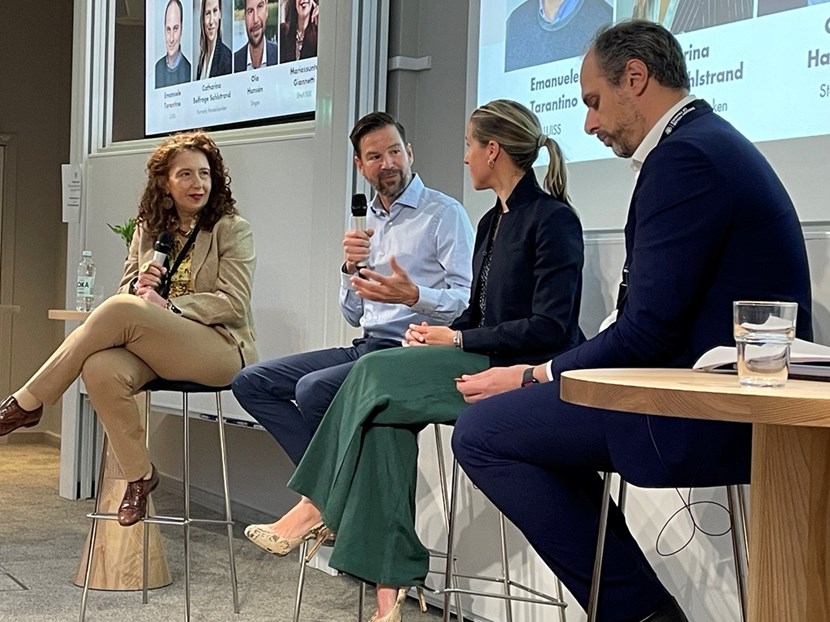Is Europe Getting the Balance Right on Green Regulation?
okt. 03, 2025
Europe’s push to decarbonize heavy industry hinges on balancing state support with fair competition, according to industry, regulatory and academic experts at a recent seminar hosted by SHoF and GaPP.

Commission Flags Risks of Excess Subsidies
Keynote speaker Emanuele Tarantino, Chief Competition Economist at the European Commission, said the bloc must ensure subsidies remain targeted and efficient.
“We try to understand to what extent the contribution of the state is reasonable or not,” Tarantino told the seminar, hosted by the Swedish House of Finance and GaPP. “We need to be careful in limits and boundaries, because otherwise you lose precisely what you need. It is the incentive effect.”
He pointed to the EU Innovation Fund as a model, where projects across Europe compete for financing:
“This is the competition we like, because there are projects all around Europe competing for the fund and getting large amounts,” Tarantino said, however adding that growing reliance on national-level subsidies risked fragmenting Europe’s industrial policy.
Steelmaker Stresses Carbon Pricing and Demand
From the industry side, Ola Hansén, Public Affairs Director at green steel startup Stegra, said the EU’s carbon market and customer demand were decisive in securing the company’s €6.5 billion project in northern Sweden.
“The common price is going to be number one policy for us,” he said, referring to the EU’s Emissions Trading System. “The ability to show demand and secure demand for our plant was initially what really made it possible to crowd the funding we needed to get the plant.”
Still, Hansén warned of political risks to the system: “It shows that also ETS […] could be changed. It’s been there since 20 years, but things can change. If the prices get too high, we will get political interventions. We know that.”
SMEs Rattled by Regulatory Rollback
Catharina Belfrage Sahlstrand, former Chief Sustainability and Climate Officer at Handelsbanken, highlighted how small and medium-sized enterprises (SMEs) are reacting to shifting EU rules. She pointed to the EU’s decision to ease sustainability reporting requirements for SMEs under the Corporate Sustainability Reporting Directive (CSRD), which had been expected to become a landmark regulation.
She added that the framing of sustainability has shifted away from moral imperatives.
“It’s very important to stress the facts that for many of these companies, this is about future proofing,” Belfrage Sahlstrand said.
Markets, Policy and Political Realities
In the panel discussion, speakers debated how to balance market mechanisms with targeted industrial policy. Hansén stressed demand and carbon pricing as the foundation, while Belfrage Sahlstrand underscored the power of certainty.
“The certainty that a certain scheme will remain in place is powerful in itself,” Belfrage Sahlstrand said.
Tarantino concluded that while Europe’s carbon market and border adjustment mechanism are already significant steps, the challenge lies in maintaining credibility.
“There are a number of frictions that prevent this to be fully deployed, but we are doing something already,” he said.
Hansén added that post-Covid subsidy trends could further weaken the EU framework:
“Our fear now […] is the trend has been since covid now to open up for more and more subsidies on the mandate level. Europe has in a way weakened, or its mandate has weakened […] So I think we would want to see very strict rules on that.”
